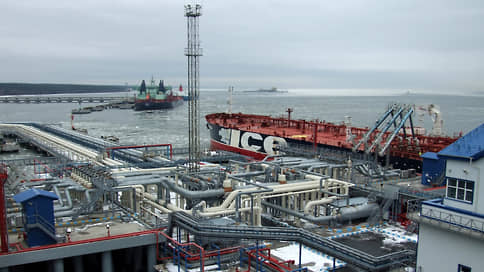Russia sharply increases oil supplies through the port of Kozmino in the direction of China
[ad_1]

According to Kommersant, Russian oil companies are sharply increasing the export of ESPO grade oil through the port of Kozmino, from where it is delivered by tankers mainly to China. Oil shipments from this Far Eastern port again reached a historical maximum in December, amounting to 925 thousand b/d. Experts attribute the increase in shipments to more active transportation by rail.
Exports of ESPO grade oil from the port of Kozmino increased in December to a record 925 thousand barrels per day, according to Kpler data available to Kommersant. 85% of this volume was supplied to China. In November, Russian oil exports from Kozmino amounted to 910 thousand bpd (about 3.69 million tons). If the current level of supplies continues, the volume of exports from Kozmino in December could reach about 3.88 million tons. Transneft declined to comment.
The design capacity of the ESPO oil pipeline is 80 million tons of oil per year, 30 million tons of which are supplied by pipe to China via a branch from Skovorodino in the Amur Region. The remaining volumes are distributed through the ESPO-2 system between the Khabarovsk and Komsomolsk refineries, as well as the port of Kozmino, from where oil is loaded by tankers for delivery to Asia – mainly to China.
Since last year, against the backdrop of the embargo on Russian oil, oil companies have been thinking about alternative routes for the supply of raw materials, and Transneft has been thinking about expanding the infrastructure. Thus, since the end of last year, oil workers have resumed supplies of East Siberian oil to Kozmino by rail (see Kommersant, October 4, 2022), although due to high railway tariffs this route has not been in demand in recent years. “We are preparing to restore oil supplies for export from the first stage of the ESPO via the railway, through which about 15 million tons of oil were previously shipped,” Nikolai Tokarev, head of Transneft, said in an interview with Kommersant in August. Transneft planned to increase shipments from Kozmino to 42 million tons in 2023. Also last year, Transneft increased the throughput capacity of ESPO-2 through the use of special anti-turbulence additives.
It is beneficial for oil companies to maximize the export of ESPO grade oil: historically, due to its quality characteristics, it is traded at a premium to the main Russian Urals grade. In addition, this type of oil outperforms other types of oil due to its short logistics distance to China. According to Kpler, ESPO is now trading at the same level as Brent, if we take into account the cost of delivery to China (at FOB Kozmino the discount to Brent is $3–4 per barrel). For comparison: the Urals discount to Brent averages about $10 per barrel.
According to Kpler, current record levels of exports from Kozmino indicate that the supply structure includes significant volumes of rail transport. “The bottleneck of the ESPO has always been the main oil pipeline ESPO-2 itself,” points out Victor Katona from Kpler. “In addition to the Kozmino port itself, it also satisfies the needs of Far Eastern refineries.” The capacity of ESPO-2 available for shipments to Kozmino is about 830 thousand b/d, which can be increased to 850–860 thousand b/d with the help of anti-friction additives, but current export volumes directly indicate that Transneft’s plans to increase railway supply volumes to Kozmino are going well, the analyst believes. At the peak of its operation, Transneft allowed supplies of up to 7 million tons of oil per year by rail (140 thousand bpd of additional exports), Mr. Katona continues, now about half is coming – about 50-60 thousand bpd. The port of Kozmino can receive even more oil than the current record deliveries; the nominal limit of the export terminal is 1.1 million b/d, so additional supplies are potentially possible, he believes. So far this winter, unlike the Black Sea, there have been no shipment disruptions in Kozmino due to storms, which also helps increase export volumes.
[ad_2]
Source link





